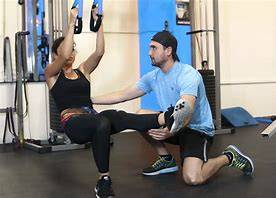Embarking on a fitness journey is a commendable endeavor, but without proper precautions, the risk of workout injuries can be a deterrent to progress. Understanding the common causes, signs, and preventive measures for workout injuries is essential for anyone committed to staying active and healthy. In this blog post, we'll delve into the nuances of workout injuries, providing insights on how to navigate the path to fitness safely.
1. Common Causes of Workout Injuries
- Overexertion: Pushing the body beyond its limits, especially for beginners or those returning to exercise after a hiatus, can lead to overuse injuries.
- Poor Form: Incorrect form during exercises puts undue stress on joints and muscles, increasing the risk of injury.
- Inadequate Warm-up and Cool Down: Skipping warm-up and cool-down routines can leave muscles tight and susceptible to strains.
- Ignoring Pain Signals: Disregarding pain during workouts and not recognizing the difference between discomfort and injury can exacerbate existing issues.
2. Types of Workout Injuries
- Strains and Sprains: Overstretching or tearing of muscles (strains) and ligaments (sprains) are common, often resulting from improper technique or overexertion.
- Tendonitis: Inflammation of tendons due to repetitive motion or overuse.
- *Stress Fractures:* Microscopic cracks in bones, often seen in weight-bearing activities like running.
- Joint Injuries: Overloading joints or sudden impacts can lead to injuries such as dislocations or cartilage damage.
3. Recognizing Warning Signs
- Persistent Pain: Pain that persists beyond the normal post-workout soreness may be a sign of an underlying injury.
- Swelling and Inflammation: Persistent swelling around joints or muscle areas should not be ignored.
- Reduced Range of Motion: Difficulty moving a joint or muscle as usual may indicate an injury.
- Localized Tenderness: Specific points of tenderness or pain may suggest a localized injury.
4. Preventive Measures
- Proper Warm-up and Cool Down: A dynamic warm-up prepares the body for exercise, while a cool down helps the muscles recover gradually.
- Progressive Overload: Gradually increase the intensity and duration of workouts to allow the body to adapt and reduce the risk of overuse injuries.
- Correct Form and Technique: Prioritize proper form during exercises, seeking guidance from fitness professionals or trainers.
- Listen to Your Body: Pay attention to signals of fatigue or discomfort and modify exercises accordingly.
- Cross-Training: Incorporate a variety of exercises and activities to avoid overloading specific muscle groups or joints.
- Rest and Recovery: Allow adequate time for rest and recovery between intense workouts to prevent cumulative fatigue and overtraining.
5. Seeking Professional Guidance
- Consulting with a Trainer: Engage with certified fitness trainers who can provide personalized guidance on technique, form, and suitable workout routines.
- Physical Assessments: Individuals with pre-existing conditions or concerns should consider consulting healthcare professionals for thorough physical assessments before starting a new fitness program.
6. Incorporating Injury-Prevention Strategies
- Mobility and Flexibility Training: Include regular mobility and flexibility exercises to enhance joint range of motion and reduce stiffness.
- Strength Training: Strengthening muscles provides additional support to joints, reducing the risk of injuries.
- Proper Footwear and Equipment: Wear appropriate footwear and use well-maintained equipment to ensure safety during workouts.
Understanding the intricacies of workout injuries and implementing preventive measures is crucial for anyone committed to maintaining a safe and sustainable fitness routine. By prioritizing proper form, listening to the body, and seeking professional guidance when needed, individuals can enjoy the benefits of exercise without compromising their well-being. A balanced approach to fitness, emphasizing gradual progression and injury awareness, paves the way for a fulfilling and injury-free journey towards health and wellness.


